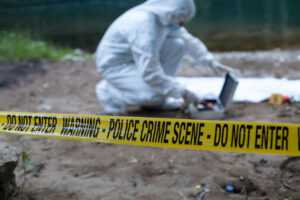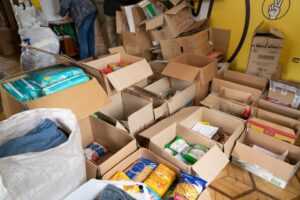In 2020, water damage and freezing accounted for almost 20% of homeowner’s insurance claims. Water damage can cause major problems in a home and can be costly as well.
While it’s important to prevent instances of water damage in the first place, you should also know what to do in case something happens. Taking the right cleanup steps after water damage can help reduce its impact and will help save you money.
In this cleaning guide for homeowners in Wisconsin, we’ll tell you how to successfully clean up after water damage.
Get in Touch With Your Insurance Company
Before you start cleaning up home water damage, you’ll want to contact your insurance company.
Be sure to find out what kind of water damage coverage you have with your homeowner’s policy and verify that you can get compensated. Not every insurance policy will cover a water leak or flood damage, so you’ll want to find out what to expect.
Document any damage before you clean any of it up. After contacting the insurance company, an adjuster will come to assess the damage and decide whether it will be covered.
Prepare for Cleaning
Before you start cleaning up the water, you’ll want to be sure to do a few things.
Turn off the power in your home to eliminate the risk of electrical shock. You’ll also want to put on protective gear when cleaning up water damage as well. Rubber boots and gloves can be very helpful and can protect you from any bacteria that’s in the water.
Remember that you need to prepare adequately if you want to have the easiest time cleaning up the water damage and getting your home back to normal.
Remove All Water in Your Home
Once you’ve prepared for the job, you can then start taking steps to clean up the water.
If there’s a lot of standing water in your home then you can start removing it with buckets or other containers of some kind. You can then mop up the remaining water or use a wet-dry vacuum to remove it and dry your home the best that you can.
You’ll have to deal with any damp belongings and any flooring, insulation, or drywall that has been damaged.
Remember that mold and mildew could spread if you don’t clean thoroughly, so you may need to remove certain elements of your home. This could include any porous material as well as flooring, drywall, and furniture if necessary.
Improve Airflow and Eliminate Moisture
After you’ve done all of the cleaning that you can with mops and wet-dry vacuums, you should let your home dry out the rest of the way. You can do this by increasing the airflow in any rooms that are affected.
You may want to set up some box fans to generate more airflow. Dehumidifiers can also be very useful for drying the area as well. Open all windows and doors to let the room air out and to get rid of any excess moisture and humidity.
Disinfect the Area
After you’ve gotten rid of the water and moisture in the affected areas of your home, do some cleaning and disinfecting in order to prevent the growth of mold and bacteria. Be sure to wipe down all surfaces thoroughly with soap and water.
Mold growth can threaten the health of your family and can wreak havoc on a home. It’s important that you clean up thoroughly, even after the water and moisture have been removed.
By disinfecting your home after damage, you’ll reduce the effect on your family’s health and prevent mold growth.
Check for Mold and Mildew
It’s important to check for mold thoroughly after you’ve suffered water damage in your home. Mold can grow fast and could start developing as little as 24 hours after flooding or water damage.
As mentioned above, you’ll want to remove all items that may be affected and dry them completely. Porous items will likely need to be thrown out to prevent the growth of mold.
Remember, it’s best to be as cautious as possible when dealing with mold. You may want to call in a professional to take a closer look and identify whether there has been any mold damage or growth in your home.
Consider Hiring Cleanup Professionals
While there may be a few things that you can do on your own to clean up your home after water damage, some things are better left to the professionals. You may want to look for disaster recovery cleaning services in your area and use them to ensure that your home is cleaned to the maximum extent after flooding or water damage.
When water floods your home, it can cause a lot of damage and can get to hard-to-reach spots. A professional cleaning service can do a thorough job when cleaning your home after water damage. They’ll also have the experience needed to do it without missing any important steps.
Consider hiring cleanup services for your home if you feel like trying to do the work yourself will be too overwhelming for you.
Dealing With Water Damage By Following These Steps
If you’ve experienced water damage in your home, make sure you take the right steps afterward. Work hard to remove water and moisture and thoroughly disinfect the area.
Need residential or commercial cleaning services in Wisconsin? Contact us today to learn more about what we can do for you.


